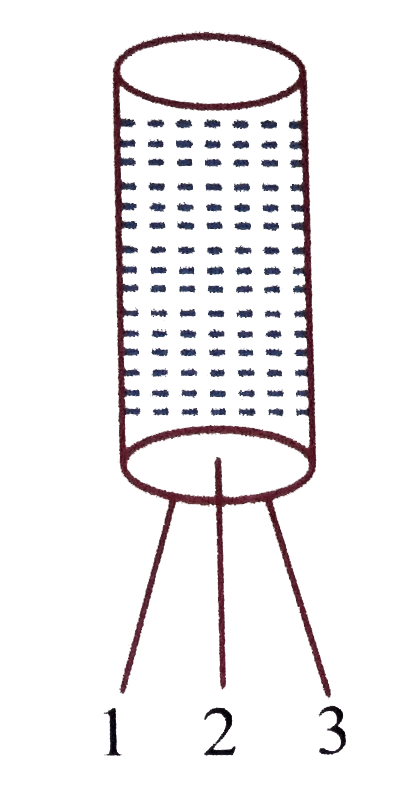Consider the transistor shown in figure, its terminals are marked as 1,2 and 3. Using multimeter one try to identify the base of transistor, he proceed in the way as follows. Experiment I: He touches the common lead of the multimeter to 2, then on touching other lead of multimeter to 1 he hasn.t got any beep (indication of conduction) but when connected to 3 got the beep.
Experiment II: He connected the common lead of multimeter to 1 and other lead to 2 and 3 one by one then in this case he got beep for both connections. From this we conclude that

1 is base
2 is base
3 is base
none of these
The correct Answer is:B
Topper's Solved these Questions
- PRACTICAL PHYSICSBOOK - AAKASH SERIESCHAPTER - PRACTICAL PHYSICSEXERCISE - LECTURE SHEET LEVEL-II (ADVANCED) Linked Comprehension Type Questions
6 Videos
- PRACTICAL PHYSICSBOOK - AAKASH SERIESCHAPTER - PRACTICAL PHYSICSEXERCISE - LECTURE SHEET LEVEL-II (ADVANCED) Linked Comprehension Type Questions
6 Videos
- PHYSICAL WORLDBOOK - AAKASH SERIESCHAPTER - PHYSICAL WORLDEXERCISE - Exercise -I
10 Videos
- RAY OPTICSBOOK - AAKASH SERIESCHAPTER - RAY OPTICSEXERCISE - PROBLEMS ( LEVEL-II)
50 Videos
Similar Questions
Consider the transistor shown in figure, its terminals are marked as 1, 2 and 3 using multimeter one try to identify the base of transistor he proceed in the way as follows
Experiment 1: He touches the common lead of the mulimeter to 2 then on touching other lead of miltimeter of 1 he hasn't got any becp(indication of conduction)but when connected to 3got the beep
Experiment II : He connects the common lead of multimeter to 1 and other lead to 2 and 3 turn by turn then in this case he got beep for both connections. From this we conclude that

View SolutionTo identify whether the transistor is working or not using multimeter, which statement serves the purpose?
View Solution
Knowledge Check
When a multimeter is connected to a transistor, it conducts when
Abase-emitter is forward biasedBbase-collector is forward biasedCbase-emitter is reverse biasedDbase-collector is reverse biasedHe hasn't slept in his bed.
AHis bed hasn't been slept in.BHe had not been slept in his bed,CHis bed had been slept in.DHis bed had not been slept in.In the following questions, a sentence/ part of the sentence is printed in bold. Below are given alternatives to the bold sentence/part of the sentence at (1), (2) and (3) which may improve the sentence. Choose the correct alternative. In case no Improvement is needed your answer is (4).
John had fold me that he hasn't done it yet.AtoldBtellsCwas tellingDNo Improvement
To identify whether the transistor is working or not, using multimeter, which statement serves the purpose?
View SolutionA digital multimeter when used as a continuity tester
View SolutionMultimeter used for AC measurement of
View SolutionA digital multimeter consists of the following component
View SolutionWhich is not the function of analong multimeter?
View Solution
